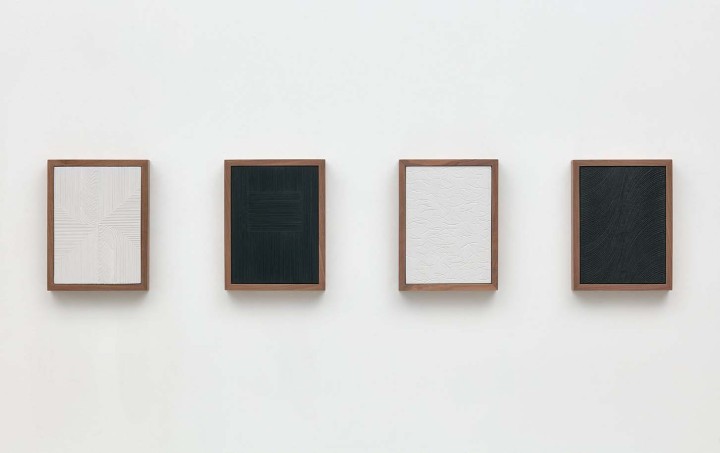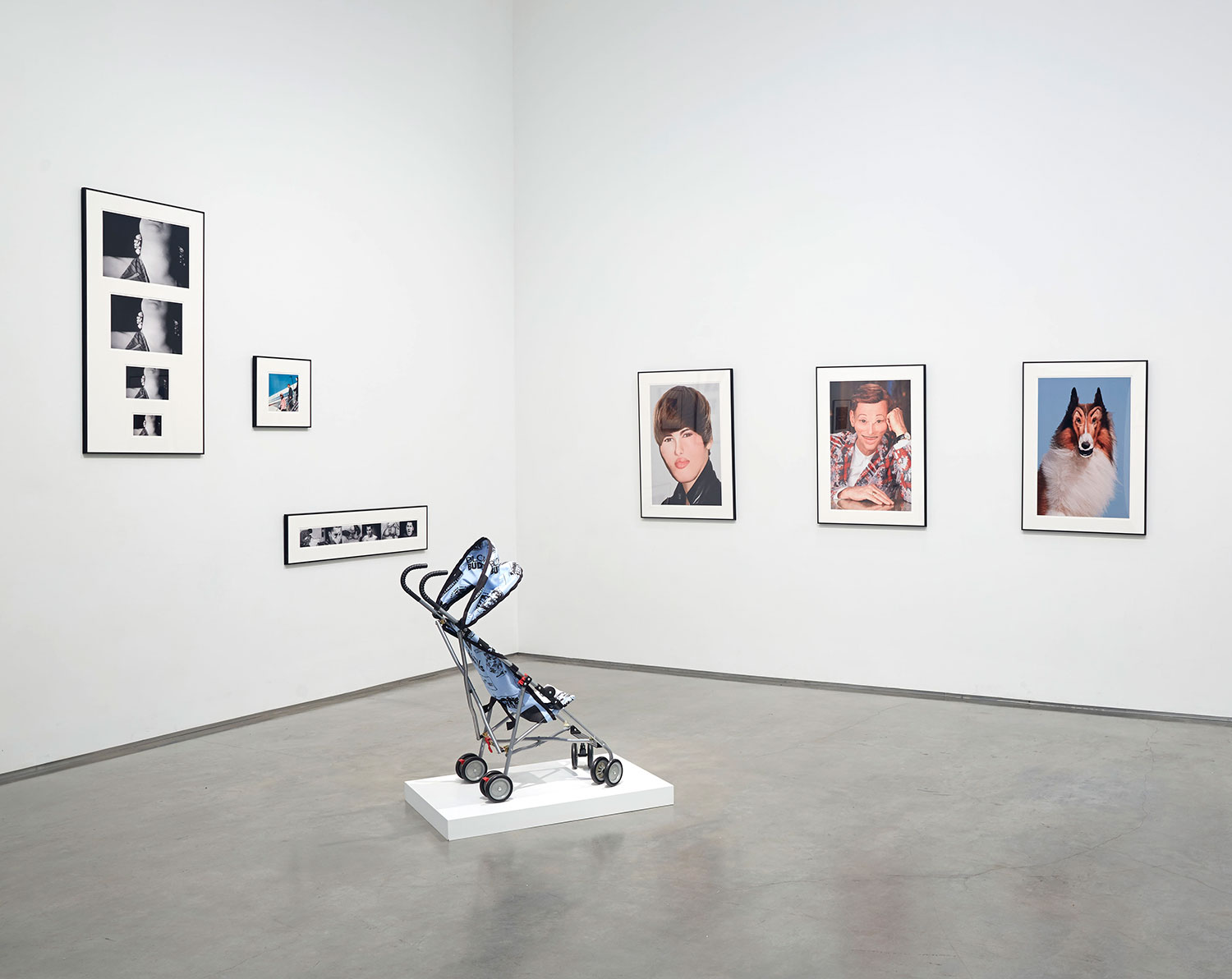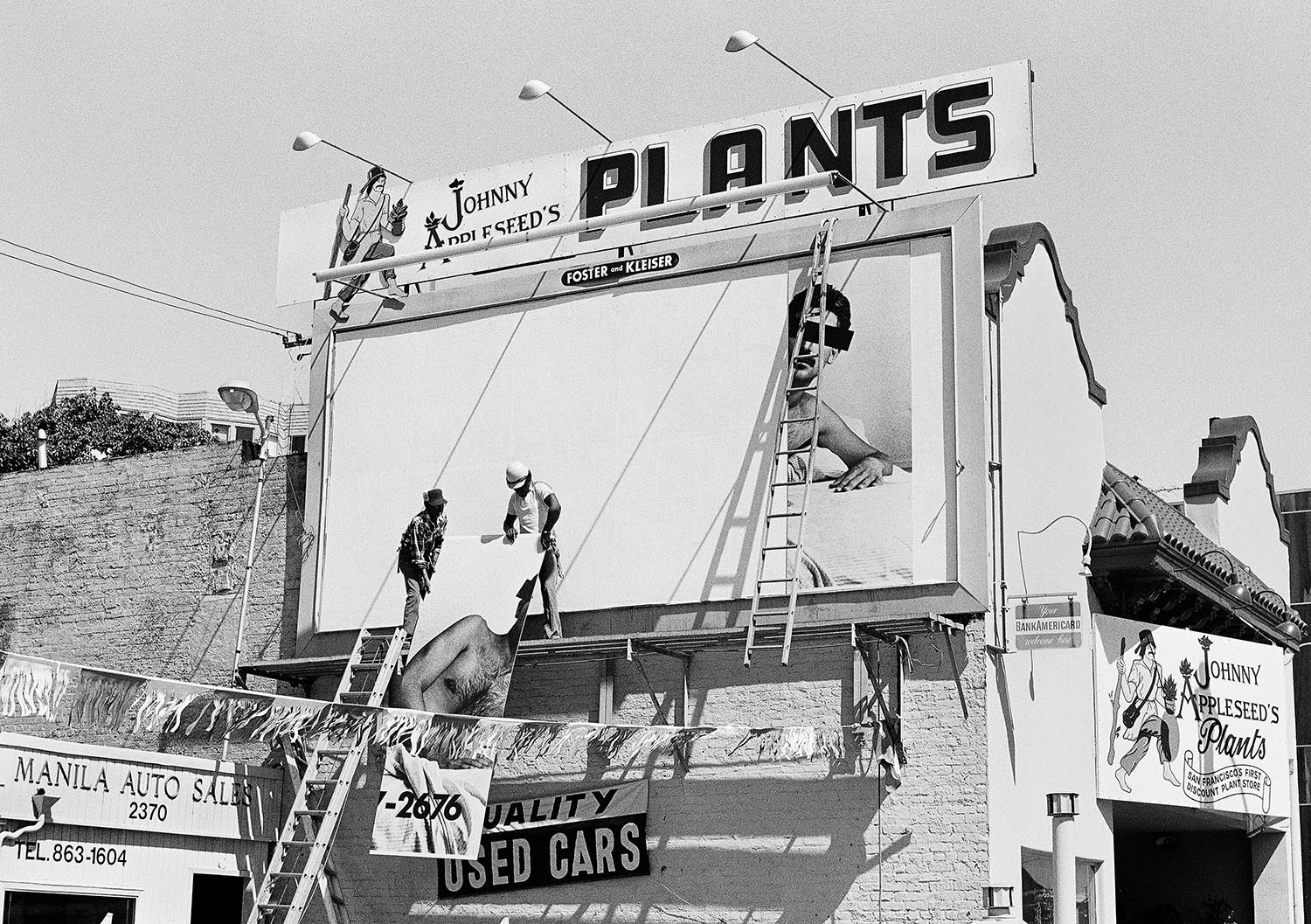When we see an object, what we are really seeing is the light reflected off of it, which stimulates neural activity in our brain leading to a judgment about the nature of the object.
This process is delightfully frustrated in Anthony Pearson’s new series of plaster works, in which the light that reflects back to the eye provides information for a myriad of possibilities about what is seen, giving us pause to consider not only the object itself but also our relation to it.
From a few meters away, each of the works of “Untitled (Four Part Etched Plaster)” (all works 2015) can look like they were made from any number of materials, from chiseled alabaster to rippled plastic to just plain old layered paint. The works are slightly bigger than A4-sized, chunkily framed in walnut, and made from cast, pigmented hydrocal, a quick-setting gypsum cement — a material Pearson has worked with in the past and which is occupying a more prominent role in his practice, whereas earlier it was photography.
A special lighting system, designed by Keefe Butler, helps to focus the viewer’s attention on the grooves and marks that make up the patterns in the mostly white-colored works: geometrically formed straight lines, a (gray-toned) feathered shape, wavy lines that look like wood grain, and randomly cut swooping indents that recall a violent ocean. Pearson has also made larger, black-pigmented, etched plaster works, all Untitled (Etched Plaster), with fine lines radiating out from a center circle, and which are lit to almost theatrical effect.
All of these works share an intimacy derived from way the artist has treated the material — layering it and painstakingly working detailed intrusions into their surfaces. The combination of these elements, including the lighting, induces an atmosphere of reflection; the work engenders an almost elemental relationship between human and object.




